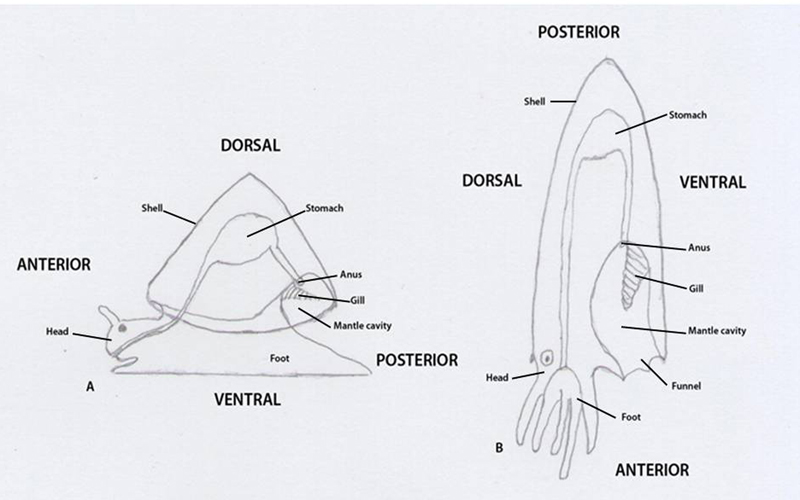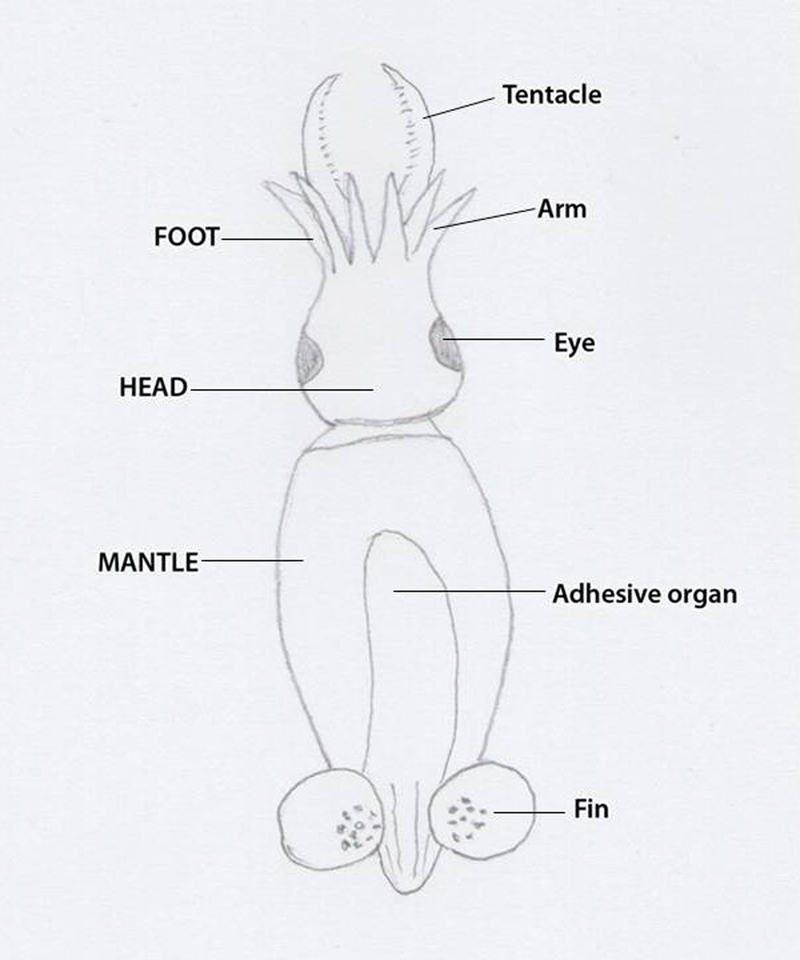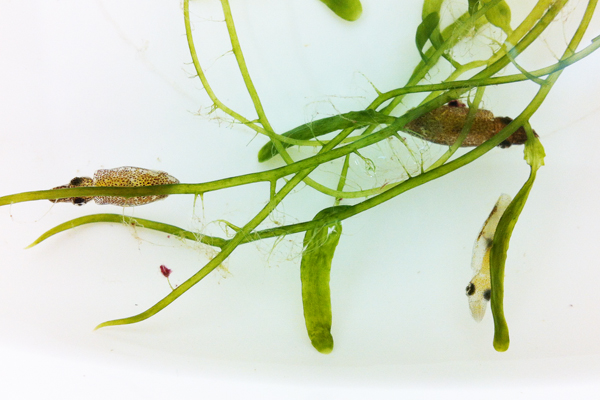Physical Description
As a member of phylum Mollusca, I. notoides displays the characteristic molluscan body features, having a mantle, muscular foot and radula. The class of molluscs to which I. notoides belongs, Cephalopoda, is highly modified from the generalised mollusc. Sometimes called the ‘hypothetical ancestral mollusc’ (HAM), it is a flattened, ovoid-shaped, benthic, marine animal with a shell, a large foot on its ventral side, for moving along the substrate, a small anterior head and a large visceral mass located dorsally. In contrast, cephalopods are elongated with their head and foot at one end of the body, which is termed the anterior end (because it typically leads the direction of travel of the animal), and the visceral mass extended into a cone shape forming a posterior ‘visceral hump’. The foot in cephalopods has been modified to form flexible appendages (arms and tentacles) and also the funnel, a tubular siphon on the ventral side that opens into the mantle cavity. All extant cephalopods, except the nautiloids have lost or internalised the shell (Ruppert et al. 2004).
 |
|
Comparison of the body plans of A, a generalised mollusc and B, a generalised early cephalopod, showing the changes to the
primary functional body axis and the basic body features.
Illustration by Samantha Reynolds, adapted from Ruppert et al. (2004).
|
I. notoides belongs to the group of cephalopods known as the Decapodiformes, so called because they have ten appendages, eight arms and two tentacles. In Idiosepius spp., the tentacles can be retracted into pockets in the head and rapidly extended to catch prey. The suckers on the appendages of decapods are bilaterally symmetrical and have horny rings (Young et al. 2012).
The bodies of Idiosepius spp. are rounded at the posterior end and have a pair of small, separated and rounded fins (Mangold et al. 2013; Norman and Reid 2000). They also possess a unique adhesive organ on the dorsal surface of the mantle which secretes a sticky substance, allowing the animals to attach to cover, such as vegetation (Mangold et al. 2013; Nixon and Young 2003).
 |
|
Dorsal view of adult I. notoides showing the basic body features (two arms are hidden from view).
Illustration by Samantha Reynolds with reference to Nixon and Young (2003) and personal observations.
|
I. notoides is the smallest of the cephalopods, achieving maximum mantle lengths (ML) when fully grown of 20mm for females and 16mm for males (Tracey et al. 2003). They are typically yellow to brown in colour(Norman and Reid 2000) but can rapidly expand and contract the pigment organs in their skin (chromatophores) to appear almost colourless or very dark (see Integumentary System tab). Observations in the lab noted them producing varying patterns and combinations of colours including dark stripes down the sides of the mantle.

|
|
Three specimen of I. notoides, attached to Caulerpa sp., showing different body colours and patterns.
Photograph by Samantha Reynolds.
|
|